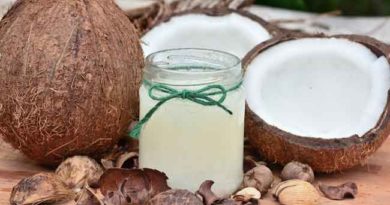FOOD-HEALTH: 6 REASONS WHY ASIAN CUISINE IS GOOD FOR YOU
Asian soups are believed to have specific healing properties based on its ingredients. Photo: Supplied
,
“I’ve made you some Borbor Mo’an (chicken congee). Have a bowl and you’ll feel much better!”
Food is the remedy for all illnesses. Chances are, you would have heard those words when you were feeling under the weather. One of the unique things about Asian culture is that the approach to food and eating is to create wellness.
Whether Indian, Malay or Chinese, some parts of Asian cuisine are renowned for its nutritious and balanced properties.
In fact, researchers at the International Food Policy Research Institute also believe that the Asian plant-based diet – locally grown staple grains like rice, starchy roots such as potatoes, legumes, beans and other vegetables and fruits provide protection against many chronic diseases.
Here are a few healthy Asian food habits you can practice today:
1. Have Soup Often – Most soups cooked at home are made from the bones of chicken, beef or fish together with a combination of different vegetables, whether leafy like the spinach, or hardy like the lotus root. The combination of vegetables and broth provides you with a concentrated load of vitamins and minerals with every spoon, which means even a small portion can fill you up quickly. Asian soups are believed to have specific healing properties depending on its ingredients. Not only does it give comfort during times of illnesses like flu, fever or a sore throat, it also strengthens the body from fatigue. Just like a hot cup of tea, the warm temperature of soups is also believed to improve the overall digestive process.
2. Eat a 3:1 Ratio Vegetables to Meat – 3:1 means three times the amount of vegetables to the amount of meat. While meat is high in protein, it isn’t the healthiest choice of protein. The Asian diet includes a healthy balance of meat and vegetables following a 3:1 ratio of vegetables to meat, which is filling while also providing the daily nutrients recommended according to the food pyramid.

3. Small Plates and Chopsticks – Not only are small plates and chopsticks aesthetically pleasing to eat from, but they also help you eat smaller portions. Chopsticks are an easy way to avoid the shovel technique of eating, thus reducing overeating or eating too fast (which both cause bloating in the stomach). Eating slower has also been proven to be good for health, as it lowers the blood glucose level released by the body during the digestion process.
4. Rice Combination – Rice is a staple food in Asian cuisines. It’s almost incomplete to have a meal without rice! Opting to combine the types of rice served will give you much more nutrients in your diet in the long run. Black, brown, red, or even purple rice is nutritionally denser than white or brown – resulting in a less starchy diet, therefore, less sugar conversion and lower calorie consumption.
5. Seafood – Research supports this common Asian diet practice of eating fish almost daily. Fish provides one of the highest amounts of healthy oils and lean protein in a serving as compared to other kinds of meat. Whether it’s lightly fried, filleted, steamed or cooked in a curry, load up on the fish dishes!
6. Herbs and spices – Not only do these give dishes a richer flavour and taste, herbs and spices also known to relieve common health ailments and promote better general health.
Similar to yin and yang, Asian foods and eating habits revolve around keeping the diet in balance. It isn’t only about what you eat but also how you eat and how much you eat; recognising that good health and wellness is a way of life that extends beyond food but into physical activity like yoga or tai chi. Perhaps we can first start by following these healthy food habits as a step to living a more active and healthy lifestyle.

Brought to you by AIA, the largest life insurer in the world










